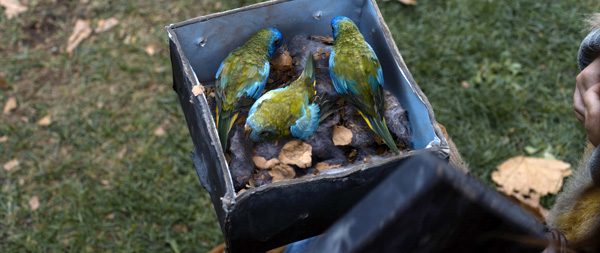
‘Bird Box’ is a science fiction drama about an invasion of creatures that begin to destroy humanity by appearing suddenly to individuals and invoking their worst fears and greatest sadness, triggering a rush of self-destructive emotion that drives each one to suicide. The only way to escape death is by never seeing them.
The main character Malorie is pregnant and, after witnessing the suicide of her sister at the start of the film, becomes determined to survive. She joins a group of people hiding in a suburban house. But as her companions one by one fall prey to the creatures, she must eventually make her way alone down a river in a rowboat, blindfolded with two small children, through the wilderness to safety.
The story cuts back and forth between the story’s two main place and time settings - the house where Malorie and the other characters hide, and the wild river she travels down with the children some years later. Production of the film was strenuous because on every sequence, the director Susanne Bier wanted to rely as far as possible on practical effects and stunt work, to capture as much as possible in camera.
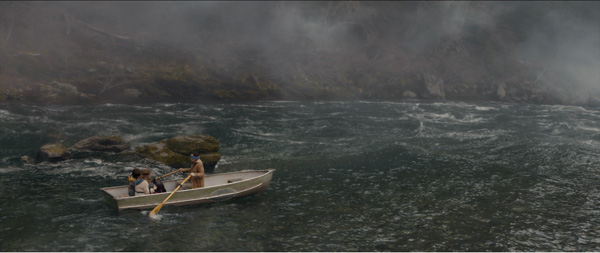
Visual effects were essential to make that in-camera work look realistic and believable, and to enhance the drama and tension of each scene. One notable aspect of the film is that although it contains about 520 VFX shots that convince the audience of the danger and drama the characters experience, all of this work is completely invisible. The forest and river environments, the vegetation and water, destruction and the envisioning of the creatures themselves – all were enhanced or created with effects to help tell the movie’s story.
Production VFX supervisor Marcus Taormina started working on the project only three weeks before principle photography. He worked with ILM London as the primary vendor. The shoot took place almost entirely on location – the earlier parts of the story were shot at and around a house in Los Angeles, while the later river sequences were shot mainly along the Smith River near Crescent City in Northern California.
On Location
Marcus needed to spend quite a bit of time on the sets collecting data and reference for post. “When I’m at a shoot location, I capture as much set data as I can as a way to support the director’s decisions about shooting scenes for drama and storytelling,” he said. “We always wanted to be able to recreate any part of a set in case the director wanted to add, remove or change something, or even adjust a camera move. We captured a lot of still images, scanned some sets, and recorded the cinema camera and lens data, with their 3D position within the set.
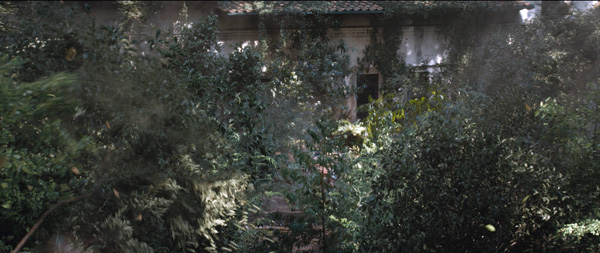
“Because we started on the project so close to the shoot, no time was left for previs. We used storyboards and in any case, since Susanne comes from an independent filmmaking background she preferred to plan shots on the day as the shoot proceeded, instead of committing early on to an animatic.”
The movie was shot with the RED Weapon 8K S35 camera, sometimes with a three-camera array on set recording 48 fps. ‘The DIT team designed an efficient on-set workflow, but it was still a lot of data to manage. We brought the resolution down to 4K for the VFX work and DI. The deliverables for Netflix needed to meet their 4K IMF standard and it was better to work through post at the same resolution. The 8K footage did come in handy a few times to re-frame or crop in on a shot.
Street Scene
In the street scene at the beginning of the film, we see multiple car crashes as suicidal drivers cause multiple accidents that result in explosions, flying debris and general chaos. A lot of in-camera special effects and stunt work was done that required clean up, background reconstruction, and quantities of digital set dressing in post including CG dust and debris. Many of the practical explosions needed augmentation or appeared overexposed in the plates, but all of them were valuable to use as reference for the bigger explosions the artists created with combinations of 2D and 3D elements.
The production’s special effects and stunt teams were dedicated and completely prepared to help the production capture as much action as possible in camera, avoiding greenscreen stages almost entirely in spite of the dangerous nature of the scenes of destruction, or shots of the characters travelling over rapids on the river. In none of the film’s shots are the actors replaced with digital doubles.
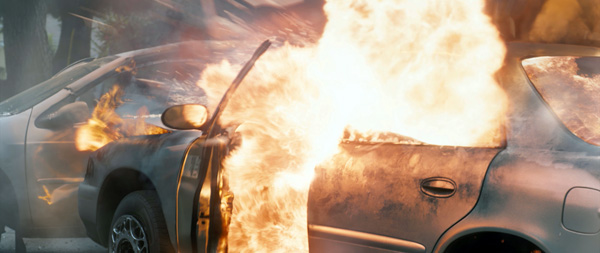
One of the only green screen shots takes place in this street sequence. As Malorie’s sister tries to drive away from the scene, she is overcome by the creatures. She drives into traffic and her truck is thrown into the air and flips over. The special effects team staged the accident but the two actors, suspended for a moment in mid-air, had to be shot against green screen. For the composite, ILM’s artists enhanced the background, which had been shot first, and ensured continuity between the interior and exterior of the vehicle.
When working on the plates of the live action, Marcus could sometimes use the practical effects to create continuity in the action. For example, seeing her sister walk deliberately into the street toward an approaching garbage truck, Malorie hesitates. To help explain her hesitation at a key moment in the story, Marcus augmented a practical explosion that occurred in the plates almost off-camera.
Defining the Creature
The director and the filmmakers were open to ideas about envisioning the creature in the film, which Marcus preferred to call the Presence, but they never wanted it to actually appear on screen. "As a result, the visual indications relied on environmental and atmospheric FX, along with numerous cloth and hair simulations. In certain key scenes, Marcus elaborated on the initial concept of a creature shadow by adding secondary and tertiary shapes to create the impression of a nebulous, shape shifting being, along with these elements," said Marcus.
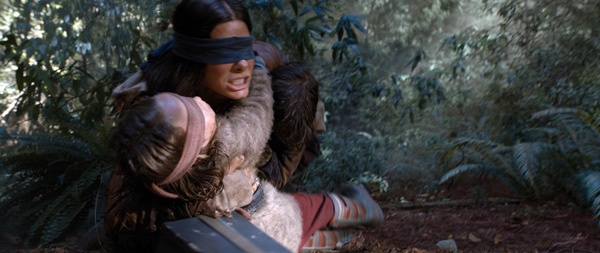
"We devoted a lot of R&D to how this would appear in the shots and what other elements should be affected. As well as ILM London, several facilities and artists including concept artist Crash McCreery, Aaron Sims Creative and VFX designer Lubo Hristov contributed concepts. The team experimented with anti-gravity effects, leaves and debris rising on currents of air, thrashing motion through the forest and static effects. But for the director, a shadow was always the most effective look."
Down the River
Marcus and ILM London VFX supervisor Mark Bakowski talked over at length how they should handle the climactic sequence as Malorie and the children reach a section of rapids on their journey down the river to escape.
First, Marcus had the river environment 3D Lidar scanned and captured via drone in detail by Cedarleaf VFX. He said, "Static and Spydercam array plates were shot in the same areas utilising a 3-camera motion picture array to capture an extensive 360-degree environmental cyclorama. Digital stills, along with static and boat-propelled motion picture footage, were also captured for supplemental support. All of this material was capture to ensure an accurate rendition of the Smith River at the time of the shoot, as it is a free flow river and often changes."
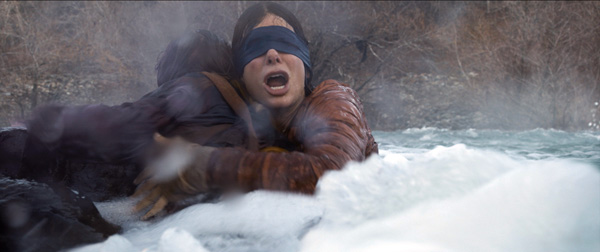
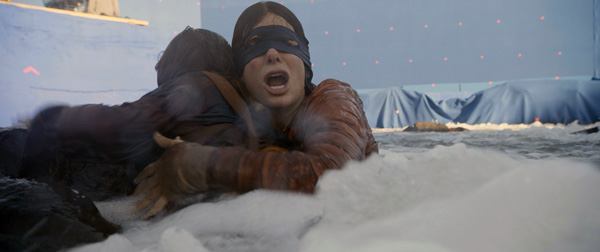
For the characters, a shoot took place in a water tank to capture controlled shots with the actors, while stunt performers in helmets replaced the main cast and made the whitewater trip, which was actually quite dangerous, in camera. In some shots, articulated dummies replaced the children, and the stunt performers’ heads and sometimes faces were replaced during post.
White Water
"The post-treatment of the water was going to be more of a challenge because the in-camera water tank shots occasionally lacked the proper drama and attitude of the white water seen in the surrounding, supporting footage. The sequence needed to express the violence of the river and the danger the family was in but still look realistic and was to avoid obscuring the actors. In preparation, while on location and in the water tank, they shot as much 2D water in different states as possible," Marcus said.
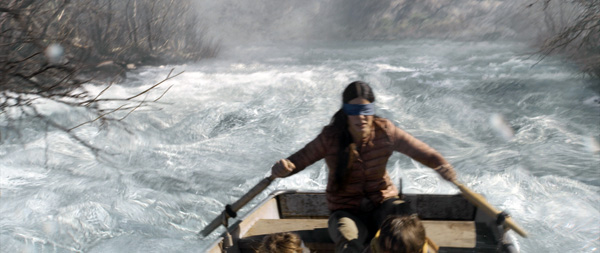
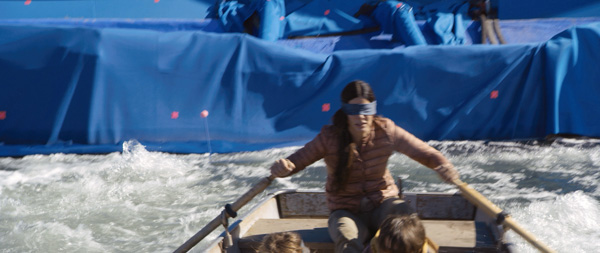
Armed with all of these materials, ILM in London took on the majority of the river and rapids scenes by combining techniques including 3D water simulations and environmental builds along with intricate face replacements, stunt performer augmentation and complex composites.
Scanline in Munich helped enhance a scene in which Malorie’s boat encounters a half-submerged eighteen-wheeler truck, with additional 3D water simulations and CG environmental augmentations. ILM shared many of their 3D files and rendered elements with the Scanline team to help set up simulations that would blend effectively into the environment and achieve the water looks Marcus was after in the final cut of the film.
After Malorie and the children leave the boat at the river’s edge and continue on foot through the bush, the artists augmented the location with thick vegetation to create a dense, menacing forest environment where the creatures lurk just out of view, calling out to the characters and confusing them as they try to make their way to safety.
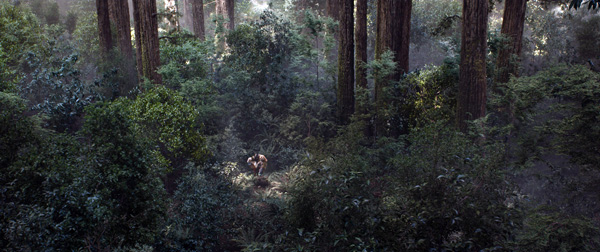
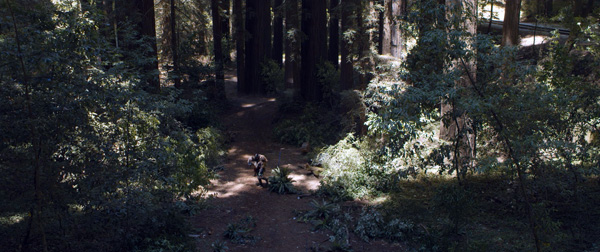
Bird Box
One of the most interesting effects of the movie are the three grass parakeets that Malorie acquires as pets during the story, and that give the film its name. Not only are they beautiful and charming but they have a special ability to detect the approach of the creatures before the characters realise they are near. The birds are also entirely digital, mainly the work of ILM in Singapore.
A day was spent capturing reference footage of real parrakeets as reference, allowing the team to build up a library of behaviours and looks to support the rotomation and keyframing the artists used to refine the animation. As much as the looks and feathers, lighting and compositing, the birds’ performances were extremely challenging to recreate. For a shot showing Malorie giving them water in their box, the animators went through countless iterations over a five or six-month period to nail the birds’ motions.


















